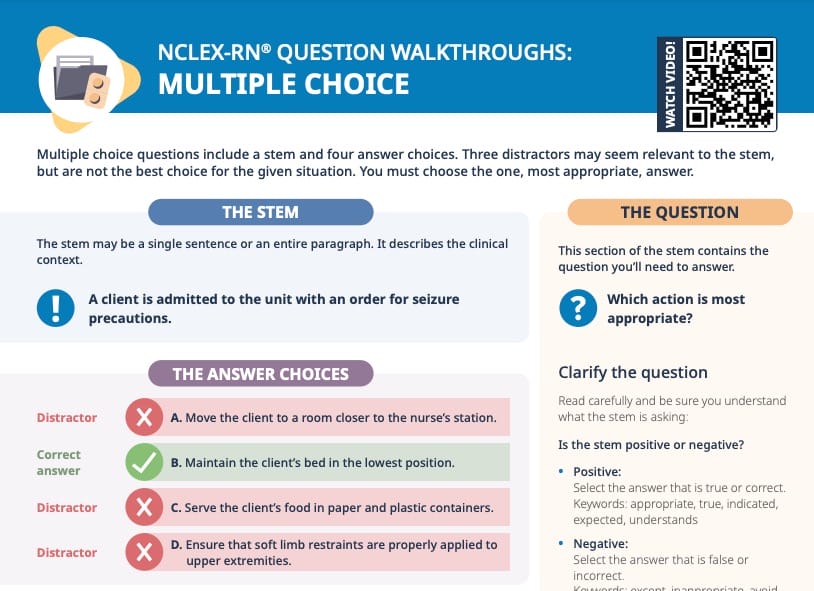Analyze the question stem and recall what you know about leukemia
Rephrase the question in your own words
We have a patient/client diagnosed with leukemia and a collection of symptoms given, and the task is to choose the symptoms that should be expected to occur due to leukemia.
What does the question aim at?
The task is matching the symptoms to the condition, reasoning for each answer choice why it may be a result or not. The question therefore tests if you know the pathophysiology and typical symptoms and problems that can arise with leukemia.
What do you know about leukemia?
Leukemia is cancer that begins in the blood-forming tissue of the bone marrow. It does not form solid tumors, but causes large numbers of abnormal white blood cells to build up in the blood and bone marrow. The inadequate normal cells cause poor oxygenation, bleeding risk, and inability to fight off infection.
Systematically approach the answer choices
Tip: Remember, in select-all-that-apply questions, it does not help to compare, rank answers, or look at how many correct or incorrect answers you expect. Treat each answer choice separately.
A. Increased risk of bleeding
Leukemia patients have decreased platelet counts, which increases the risk of bleeding (e.g., petechiae, bleeding from the nose, gums, kidney, or intestines). So, increased risk of bleeding is definitely associated with a diagnosis of leukemia. This answer is correct.
B. Weakness and fatigue
A lack of available oxygen due to anemia causes fatigue, weakness, and shortness of breath. Anemia is common in leukemia, making weakness and fatigue very common symptoms of leukemia. This answer is correct.
C. Pain and pressure sensation on chest
Leukemia is relatively painless. This answer choice aims at distracting you to mix up leukemia and lymphoma, whereas pain symptoms like the ones described here may be more likely hinting at lymphoma, where lymph nodes swell and cause discomfort. This answer is incorrect.
D. Risk of infection
Because the white blood cells in leukemia are immature, the body cannot fight an infection effectively. Risk of infection is therefore definitely associated with leukemia. This answer is correct.
E. Severe focal bone pain
As stated before, leukemia is generally relatively pain-free. Affected persons can have some generalized bone discomfort resulting from the aggressive production of immature cells; however, while there can be some bone pain in leukemia, it will not be focal. Severe focal bone pain, on the other hand, is due to a build-up of plasma cells in the bone marrow associated with multiple myeloma. This answer, again, requires you to differentiate the symptoms of different cancers. This answer is incorrect.
Recap
When identifying the clinical characteristics of a condition in a select-all-that-apply question, take care to keep in mind possible related conditions, so that you don’t mix up conditions and mark answers correct that should not be. Helpful questions to check:
- Which of the symptoms are specifically and unambiguously associated with the presented condition?
- What other conditions could cause the symptoms in an answer choice – would that be more likely?
- How does the pathophysiology of the condition lead to the symptoms?
Remember: In select-all-that-apply (multiple-response) questions, one or all of the answers can be correct. Do not get distracted by trying to estimate which percentage should maybe be correct and incorrect – select-all-that-apply items require the intuition to be switched off, and for you to focus clearly on each individual answer choice.

